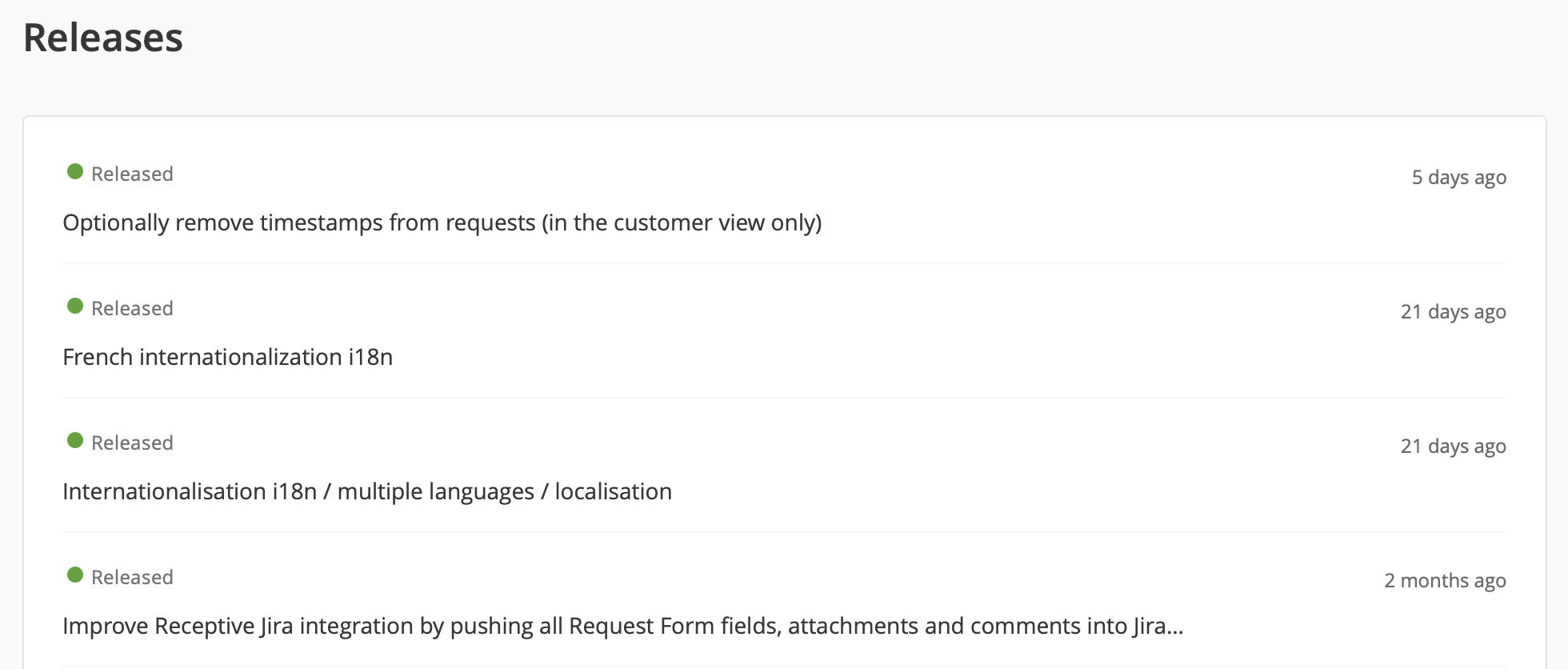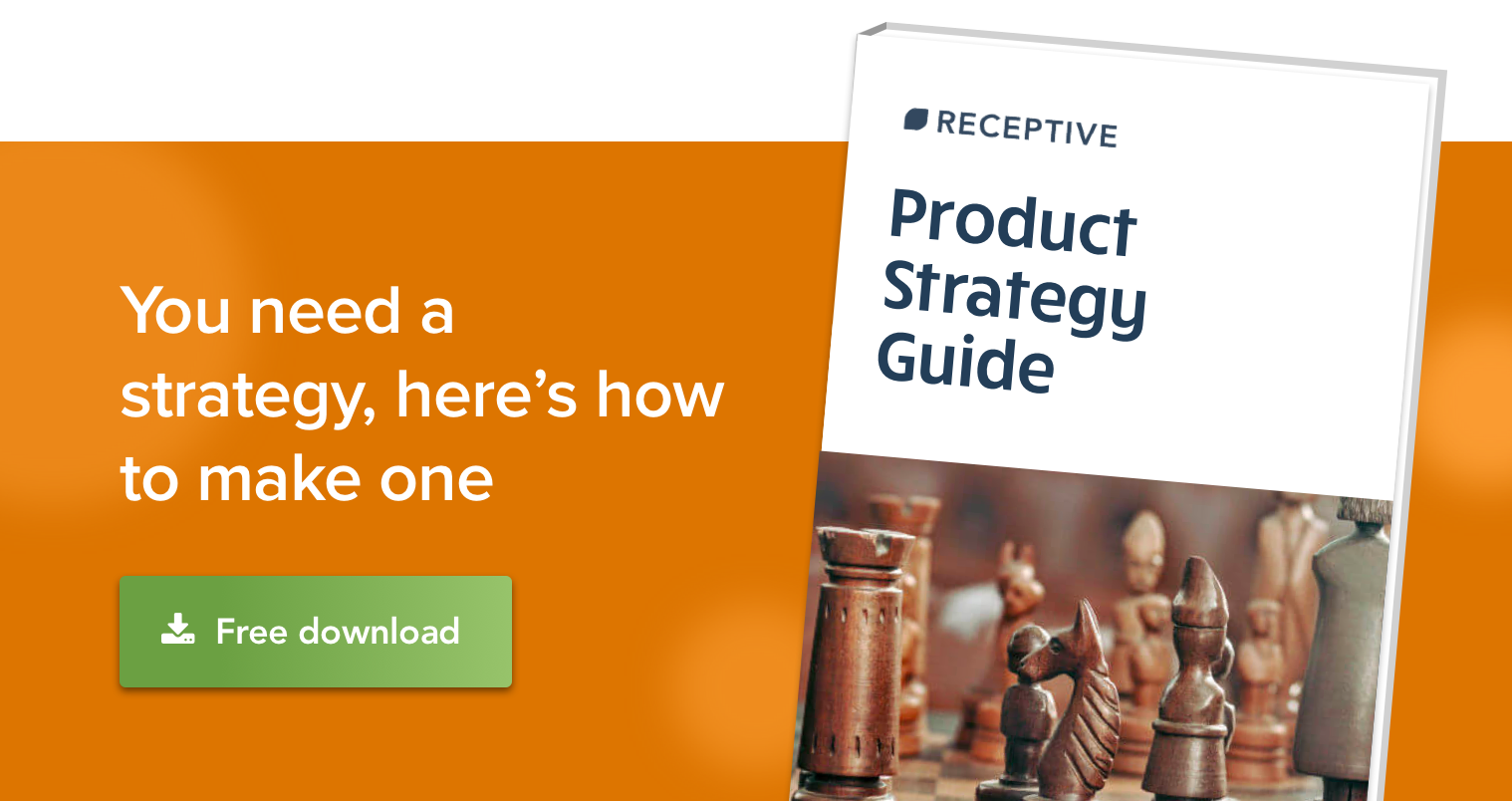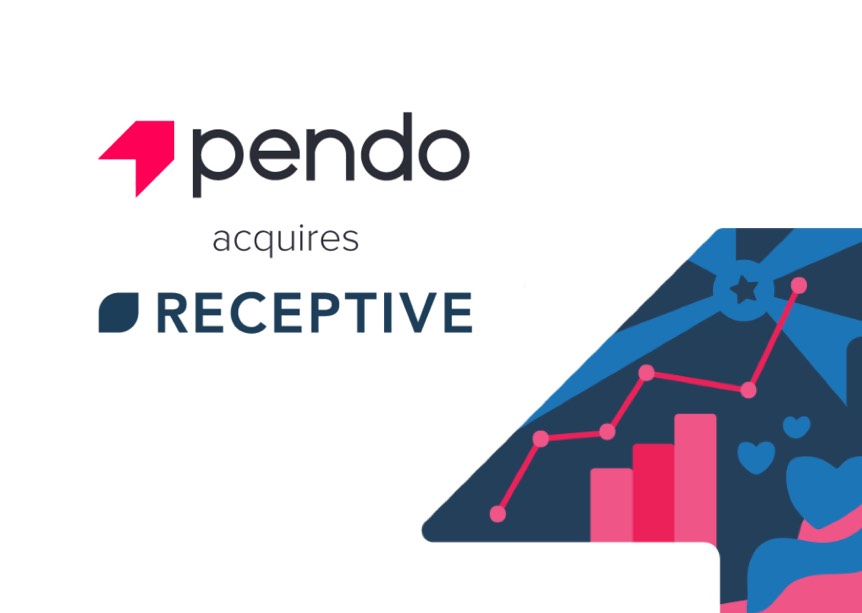NOTE: This blog post is based on a Flight plan webinar which you can access here.
If you’ve already got a roadmap planned out for the foreseeable future, you might be hesitant about using Receptive, concerned that it’ll throw all your work down the drain.
But that doesn’t have to be the case at all. You can use Receptive to introduce the Voice of the Customer into your existing projects to enhance what you already have.
A few tiny tweaks and Receptive can provide the information you need to take your existing roadmap and make it even better.
Engaging Your Customers
For any of this to work, you need to ensure your customers are engaged with Receptive. There are a few useful ways of doing this.
Firstly, you can add items to your Release Log. This is your opportunity to shout from the rooftops about your latest new features or improvements. It’s a great marketing tool, and an effective way of getting your customers involved with the feedback process.

Secondly, you can share your roadmap with your customers. While there are some companies who believe this to be a bad idea, creating a customer-oriented roadmap is an amazing way of engaging customers, and getting them excited about what you have planned for your product.
Finally, you can start using Receptive to gather more data. We aren’t talking about loads of new feature requests or ideas, that’s the last thing you need when your roadmap is already full. Instead, we’re talking about collecting extra, more detailed information about the projects you already have planned.
You can do this using our Flexible Emailing feature. If, for example, the next project on your roadmap is to improve your UX, you can directly ask the customers most interested in the UX improvements for further feedback, and perhaps share ideas of your own.
A real-world example of this is that we were recently asked by several customers for an “Intercom Integration”. That sounds like a simple enough request to understand. However, once we started talking to customers about it in more detail, it quickly became apparent that the integration meant different things to different people. Without that information, we could have wasted valuable time and resources building the wrong thing.
Feedback is an ongoing process, and should feed into everything you build, even if you’ve already planned out what you’re working on next.
Which brings us nicely on to…
It’s Not a Backlog, It’s a Library
A common nightmare that keeps Product Managers up at night is the dreaded product backlog - a never-ending slew of features and ideas that grows and grows.
The interesting thing about a backlog, however, is that it isn’t really all that bad. In fact, when you think about it, a backlog is really just a collection of data and information.
And since when has data been a bad thing?
The issue lies with the mindset we have. By viewing the data as a backlog, you’re implying that you’ll have to slog your way through it all. But why?
There’s no need to work your way through everything all at once. You don’t gain anything from that. You already know what you’re working on, so why not focus on the relevant data?

Instead of a backlog, think of it as a library.
You don’t walk into a library and think, “Golly, I’m never going to get through all these books!”. You don’t have to read them all. You just read the ones that are most relevant to you and what you’re trying to achieve.
To refer back to the previous example, if you’re planning on improving your UX, the only bits of your backlog (read: library) that matter are the bits relating to UX.
Everything that gets put into Receptive, stays in Receptive. It’s not going anywhere, there’s no rush, no need to get through everything. Instead, you can take your time and focus on one project, finding the relevant information as and when you need it.
And I know what you’re thinking - you’re thinking, “But my customers demand to be heard!” Well, that’s where setting expectations comes in.
Creating a Product Feedback Policy (PFP) will enable you to tell customers about your process. Explain to them what I just explained to you and they can’t possibly have any complaints if you haven’t started building their requests yet.
NOTE: You can find a handy template for the PFP here.
Another top tip is to turn off timestamps, meaning it doesn’t look weird or lazy when you finally get round to releasing a feature that was requested five years ago.
Takeaways
So, the key takeaways are:
-
Using Receptive doesn’t mean ripping up your roadmap and starting again, it means augmenting your existing roadmap with the Voice of the Customer.
-
Engage your customers by sharing your Release Log and roadmap, and use Flexible Emailing to request more detailed information for a certain project.
-
View your data as a library, not a backlog, and focus on the relevant information as and when you need it. Be sure to set customer expectations from the start.
Hopefully this helps to ease any concerns you have about using Receptive when you already have a roadmap planned out.
Thanks for reading!




